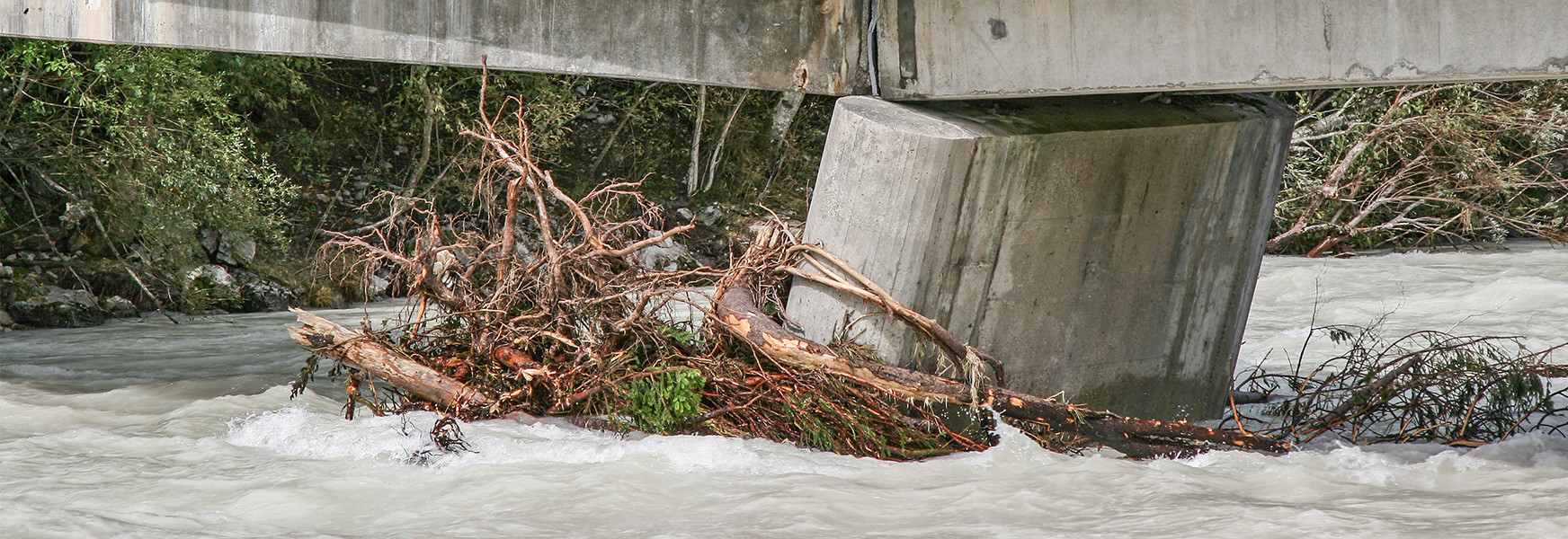Working Safely Over or Near Water

With recent hurricanes Harvey and Irma altering the landscape from sinister storm surges and unforgiving flooding rains, it is clear some form of work will need to be conducted over or near water. Whether that means making repairs to a bridge or mending a breach when the levee breaks, in either case, construction contractors and other employers need to safeguard their employees from the danger of drowning.
OSHA addresses this hazard in its "working over or near water" standard, 29 CFR 1926.106, as follows:
- Employees working over or near water, where the danger of drowning exists, shall be provided with U.S. Coast Guard-approved life jacket or buoyant work vests. (106 [a])
- Prior to and after each use, the buoyant work vests or life preservers shall be inspected for defects which would alter their strength or buoyancy. Defective units shall not be used. (106 [b])
- Ring buoys with at least 90 feet of line shall be provided and readily available for emergency rescue operations. Distance between ring buoys shall not exceed 200 feet. (106 [c])
- At least one lifesaving skiff shall be immediately available at locations where employees are working over or adjacent to water. (106 [d])
While the standard is brief in its stated requirements, OSHA has published 18 letters of interpretation since 1990 pertaining to questions on its content posed by the regulated community. One particular letter of interpretation answers a question on the need for a life jacket/buoyant work vest for employees working over water less than two feet in depth as well as the requirement for a lifesaving skiff in shallow water.
OSHA’s stance is as follows: Section 1926.106(a) does not specify a minimum depth of water where a danger of drowning would exist. However, several factors are relevant to determining whether a danger of drowning exists. These include the type (i.e., a pool, a river, a canal), depth, presence or absence of a current, height above the water surface, and the use of fall protection.
Depending on the factors present, there are some circumstances where a drowning hazard could exist where workers are near or over water that is less than two feet in depth. For example, where workers are not using fall protection and are 10 feet above a river, a worker may fall and be knocked unconscious. Without the use of a life jacket or buoyant work vest, a worker in such a scenario could drown.
However, OSHA adds that if the drowning hazard can be completely removed through the use of 100 percent fall protection (without exception), life jackets/vests would not be required. With regard to the need for at least one lifesaving skiff, OSHA answers the question, in the case of shallow water less than two feet deep, by stating:
"This provision does not state a minimum depth of water required before a lifesaving skiff is necessary. Unlike §1926.106(a), this provision does not include the phrase 'where the danger of drowning exists.'"
"As discussed in the previous question, in certain circumstances, such as where the worker is at a height where a fall could cause significant injury or unconsciousness, drowning in shallow water can result. The purpose of §1926.106(d) is to facilitate the rapid rescue of workers who fall into the water. Even in shallow water, a skiff will greatly reduce the amount of time it takes to reach an employee in the water (unless the employee is working in an area very near the water's edge)."
Of course, if the water were so shallow that rescuers could simply run in (and a skiff would foul on the bottom anyway), a skiff would not be required.
With roughly 71 percent of Earth’s surface covered in water, the destructive power of natural disasters will unfortunately continue to cause hardship for many. For employees involved in cleanup and repair, working over or near water does not need to add personal injury to the insult of devastating property damage.

